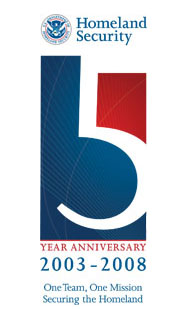
| Home | Information Sharing & Analysis | Prevention & Protection | Preparedness & Response | Research | Commerce & Trade | Travel Security & Procedures | Immigration |
| About the Department | Open for Business | Press Room |

The threat level in the airline sector is High or Orange. Read more.

As part of the Department’s layered approach to port and container security, the initial phase of Secure Freight Initiative will deploy of a combination of existing technology and proven nuclear detection devices to six foreign port beginning in early 2007.
Containers from the ports will be scanned for radiation and information risk factors before being allowed to depart for the United States. In the event of a detection alarm, both homeland security personnel and host country officials will simultaneously receive an alert.
Homeland Security is allocating nearly $30 million to fund the radiography equipment and the Department of Energy National Nuclear Security Administration (NNSA) is contributing $30 million to fund the installation of radiation portal monitors. NNSA will lead the effort to integrate data from equipment for use in-country. Homeland Security is responsible for installing the necessary communications infrastructure to transmit the data to the United States and working with the host governments during the alarm resolution process.
Data gathered on containers bound for the United States in foreign ports participating in the Secure Freight Initiative will be transmitted in near real-time to U.S. Customs and Border Protection (CBP) officers working in overseas ports and to the Department’s National Targeting Center. This data will be combined with other available risk assessment information such as currently required manifest submissions, to improve risk analysis, targeting and scrutiny of high-risk containers overseas.
All alarms from the radiation detection equipment for any container will continue to be resolved locally. For containers bound for the United States, we will work with host governments to establish protocols that ensure a swift resolution by the host government and may include instructing carriers not to load the container until the risk is fully resolved.
Ports deploying scanning equipment to capture data on all containers bound to the United States.
Large container ports with initial limited deployment to learn how to integrate the new technology with port operations and commerce flow.
The Secure Freight Initiative builds upon a risk-based approach to securing the international supply chain by leveraging programs like
This page was last modified on November 16, 2007